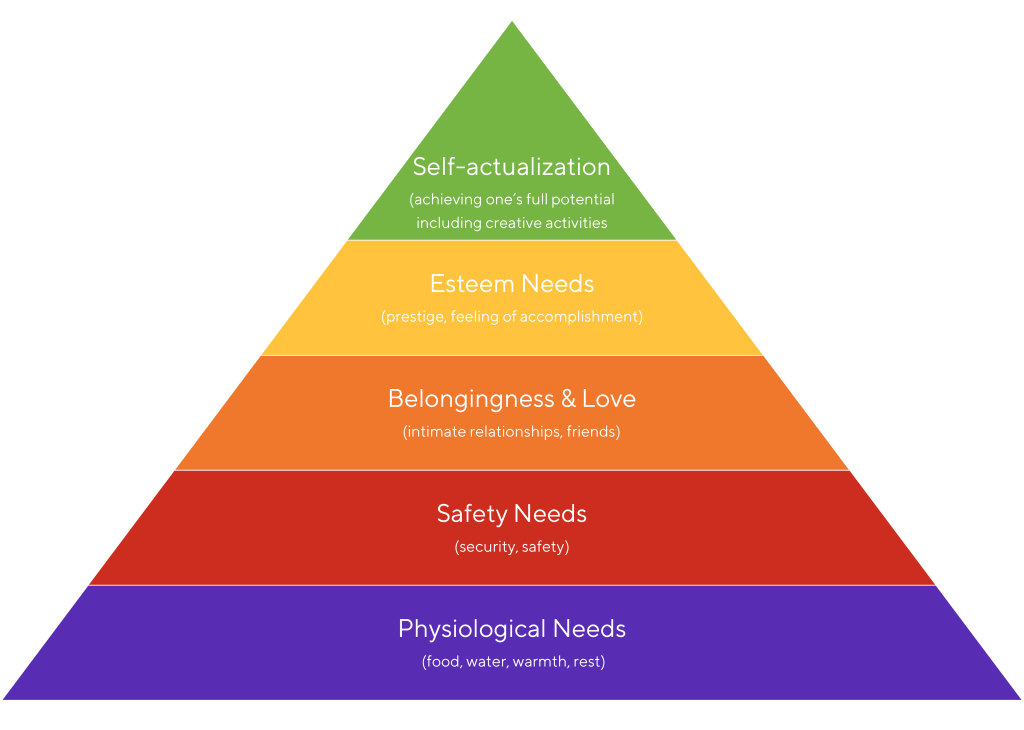As human beings, everyone has a unique set of needs that must be fulfilled for optimized living—just as each person has a distinct set of strengths waiting to be discovered. At HIGH5, we believe that understanding your top 5 strengths is the key to unlocking these needs. Often, individuals neglect their needs because they’re pursuing goals misaligned with their innate talents, like diving into online gambling in Illinois without spotting how it taps into a hidden knack for calculated risks and quick decisions. They may misunderstand what a need truly is, just as they might overlook their natural strengths, leading to health problems, sadness, and hindered relationships. By taking the HIGH5 strengths test, you not only uncover your unique capabilities but also gain insight into your personal needs—for example, that same risk-taker might thrive with goals centered on innovation or negotiation, turning a casual hobby into a fulfilling edge. For instance, someone with ‘Empathy’ as a top strength may have a deeper need for belongingness, while a ‘Deliverer’ might require more esteem-boosting achievements.
Psychologists have been studying the phenomenon of human needs for many decades. Perhaps the most famous breakthrough came from Abraham Maslow. By understanding his original hierarchy of needs, you can take better care of yourself and improve your well-being.
In this article, we will discuss what psychologists call a hierarchical approach to needs, and why it is so important to understand.
What is the Maslow’s Hierarchy of Needs?
Approximately 80 years ago, psychologist Abraham Maslow first proposed the idea of hierarchical needs in the Psychological Review. Today, his theory is widely recognized in the psychological community. Just as Maslow revolutionized our understanding of human needs, modern tools like the HIGH5 strengths test are transforming how we approach personal growth. By identifying your top 5 strengths, HIGH5 provides insights into your unique needs and how to fulfill them. For instance, someone with ‘Believer’ as a top strength might find that aligning work with personal values is crucial for their esteem needs.
Abraham Maslow’s hierarchy of needs is a theory of human needs which are divided into 5 primary categories. These categories include:
1. Physiological needs
Physiological needs are the needs that are physically required for you to survive. They are the first set of needs that must be met for you to be in a state of well-being.
Physiological needs include food, water, shelter, an environment suitable for humans, sleep, health, and clothing.
2. Safety needs
Humans need to feel safe and secure to be the best versions of themselves. This safety can come in a variety of ways. For instance, mental security and reassurance are often just as important as physical protection.
Some examples of safety needs are protection from the environment, limited crime/physical safety, stability, limited fear, absence of war, and financial security.
3. Love and belongingness needs
Love is truly a key part of the hierarchy theory of needs. Humanistic psychology states that not only is love great to have but is genuinely a need for full human development/well-being.
A few of the love and belongingness needs Maslow identified are: intimacy, acceptance, friendship, receiving and giving affection, trust, and family.
4. Esteem needs
Esteem needs refer to qualities of respect. Most commonly, they are related to success in one’s career. Esteem needs also help contribute to a feeling of being wanted and accepted.
Examples of esteem needs include status, recognition, fame, attention, strength, and self-confidence. The latter 2 are examples of higher-level needs, which are more personal and tend to be long-lasting.
5. Self-actualization needs
Finally, the last type of need described by Maslow is a self-actualizing need. These needs are present at the highest level of his hierarchy. Self-actualizing needs are crucial for personal growth and self-awareness.
Some of these important needs are creativity, spontaneity, problem-solving, and having a sense of humor.

Types of Needs
Human psychology is complex and often difficult to categorize. However, by studying developmental psychology and evolutionary psychology, experts like Dr. Maslow have greatly contributed to the fields of behavioral & brain sciences.
In his research, Maslow further categorized needs into 2 more major groups: deficiency and growth needs. These are further discussed below.
Deficiency needs
Deficiency needs are the needs you develop in response to being deprived. Many of the needs listed in the above section can be categorized as deficiency needs. For instance, physiological, esteem, and social needs can all be categorized as “deficiency needs.”
These (sometimes called lower-level needs) must be met. Otherwise, major negative consequences tend to follow. Sometimes, these consequences are life-threatening. Being deficient in food and water for an extended period is one example of this.
Growth needs
Growth needs include qualities such as creativity, self-awareness, problem-solving, and perseverance—all of which are potential strengths identified by the HIGH5 test. By taking this assessment, you can discover which growth needs are most critical for your personal development. For example, if ‘Creativity’ is one of your top 5 strengths, fulfilling this need isn’t just beneficial; it’s essential for your journey up Maslow’s hierarchy. HIGH5 not only pinpoints these growth needs but also provides strategies to nurture them, ensuring you’re not just surviving, but truly thriving.
Pro Tip From HIGH5
After identifying your growth needs through HIGH5, create a ‘Strength-Growth Plan’. If ‘Deliverer’ is a top strength, set goals to continually improve a skill. If ‘Self-Believer’, challenge yourself with tasks that build on your abilities, steadily climbing towards self-actualization.
The Extended Maslow’s Hierarchy
Originally, Maslow’s psychological inquiry into human needs categorized needs into 5 main stages. This model was already quite advanced and detailed, especially for the time.
However, over time, more data was collected in pursuit of science. This led to some slight changes in Maslow’s original model. There now exist versions that are 7 and 8 stages. Both were developed during the 1960s and 1970s, 20 and 30 years after the original model, respectively.

Below, we discuss the updated and expanded version of Maslow’s hierarchy of needs. The first few needs are extremely similar to the original model, with more tweaks included as the list progresses.
Biological and physiological needs
Biological and physiological needs are the needs that keep you alive. Without having these very basic needs met, it is nearly impossible to have any other needs met.
These needs include qualities such as shelter, water, food, and clothing. They are basic needs necessary for human development and survival.
Safety needs
Psychological and physical safety are included in the next phase of Maslow’s classic hierarchy of needs. Constantly feeling worried or endangered can severely limit one’s well-being and development. Thus, safety is a crucial part of one’s needs.
Sources of safety can be financial stability, protection from the environment, and mental safety.
Love and belongingness needs
People also require love to fully experience the joys of life. This love can come from romantic relationships, family, and friendships. Regardless, being loved and feeling like you belong brings tremendous emotional benefits.
These needs can be fulfilled through consistent communication with colleagues, and building friendships, hobbies, and sexual experiences.
Esteem needs
Esteem needs also contribute to a feeling of being wanted. At work and in interpersonal relationships, people want to be appreciated and valued. Esteem needs relate to that desire to feel accepted and accomplished.
Examples of esteem needs are reputation, status, fame, career success, and respect.
Cognitive needs
You likely have an active mind. With that, comes curiosity and intrigue. To satisfy your neurological needs, you will need to learn, try new things, and grow as a person. This is why fulfilling your cognitive needs is so important.
Some other cognitive needs are yearning for knowledge, exploration, and meaning.
Aesthetic needs
Aesthetic needs might sound like a shallow phrase at first. However, beauty is an integral aspect of life. Whether it comes from nature, art, other humans, within oneself, or other aesthetic experiences, appreciating beauty is truly a need that needs fulfillment.
You can meet your aesthetic needs by exploring nature, going to museums, listening to music, exploring a religious faith, and admiring your inner beauty.
Self-actualization needs
Self-actualizing needs land near the top of Maslow’s classic hierarchy. Fulfilling these needs is a crucial step toward self-growth and improvement. In short, meeting these needs helps you fulfill your maximal potential.
These needs include humor, gratitude, persistence, authenticity, and spontaneity, among many others.
Transcendence needs
These values are at the very top of the classic hierarchy of needs. They involve moving beyond simply pleasure and genuinely reaching fulfillment. Some activities in transcendence may also be placed in the prior categories. But, they are only transcendence once all other needs are met, and you truly feel fulfilled.
These experiences can be religious, sexual, personal, or scientific.
Self-Actualization Needs More In-Depth
The idea of self-actualization needs can be tough to grasp. They are less material than many of the lower-level needs. However, these needs are truly crucial for living the best life you possibly can.
To help you better understand these needs and how you could meet them, continue reading below.
Characteristics of self-actualizes
Individuals who have met their self-actualization needs, or self-actualizes, often live a much higher quality of life than those who have not.
The following qualities are often present in individuals who have met these needs:
- Acceptance
- Creativity
- Problem-solving
- A sense of humor
- Enjoying the little things
- Resilience and perseverance
- Self-confidence and self-awareness
- Autonomy
- Spontaneity
Behavior leading to self-actualization:
To truly understand what self-actualization is, you need to know the key behaviors associated with it and, more importantly, your unique strengths that can guide you there. By taking the HIGH5 strengths test, you can uncover your top 5 strengths, providing a personalized roadmap to self-actualization. For instance, if your test reveals ‘Creativity’ as a top strength, you’re already aligned with a key self-actualization trait. Fulfilling these needs can happen in a wide variety of ways, tailored to your individual strengths. Here are a few paths inspired by common HIGH5 strengths:
- Reading books on and understanding positive psychology
- Using motivational theory to achieve some greater, ultimate goal in life
- Applying a strength-based and humanistic approach to self-growth.
- Embracing your true self; practicing self-acceptance.
- Realizing your full potential.
- Setting challenging goals and working to meet them.
Pro Tip From HIGH5
Leverage your HIGH5 strengths for self-actualization. For example, if ‘Problem Solving’ is your top strength, tackle complex personal or professional challenges to grow. If ‘Empathizer’ ranks high, engage in mentoring or counseling to fulfill your need for transcendence through serving others.
Criticisms and Disapprovals of Maslow’s Theory
At the end of the day, Maslow’s theory is just that: a theory. No theory is perfect or immune from criticism. Although it is well-validated and useful to many, understanding the idea’s limitations is also crucially important.
One of the primary criticisms stems from how the idea was developed. Many modern psychologists consider it to be partially unscientific, and the data collected to be unreliable (1).
Another often criticized factor of the theory revolves around the order of needs. Maslow makes it seem like needs are always met in the same orderly fashion.
However, this is not always the case. Some individuals may meet their physiological needs first, then their cognitive needs, esteem needs, and only then their love needs. This seems impossible or highly unlikely according to Maslow’s theory, but it happens often in individuals with intense careers.
Applications & Examples
Now that you know what Maslow’s hierarchy of needs is, you might be wondering: what are the real-life applications of this theory?
In reality, Maslow’s theory of needs can make tremendous impacts on your everyday life. Whether you are an executive, team leader, employee, or intern – the theory has an immense impact on any career.
Some examples of this impact include the following:
Workplace organizations and employee motivation
Every day at work, a variety of needs are interacting. For instance, your intellectual needs are being stimulated each time you work on a difficult project.
Your social meets are being engaged when you work with colleagues. And, when you utilize problem-solving or creativity, you are meeting your self-actualizing needs.
In nursing
Nurses are known for being highly compassionate and taking care of others’ needs. However, neglecting one’s needs as a nurse is a recipe for disaster.
If you understand the importance of social and physiological needs according to Maslow’s theory, for instance, your career as a nurse can greatly improve.
This understanding helps ensure you sleep adequately and eat well, thus leading to better performance in your work and more happiness.
In education
Educators are truly heroic individuals, empowering the next generation and sparking a love of learning in millions. To be the best educator possible, it is crucial to understand Maslow’s hierarchy of needs.
Having your biological, esteem, safety, and intellectual needs met is crucial for being an effective communicator. However, as an educator, understanding and leveraging your unique strengths is equally vital. By taking the HIGH5 strengths test, you can identify your top strengths and align them with your teaching style. For example, if ‘Empathizer’ is a top strength, you’ll excel at understanding students’ emotional needs. If ‘Storytelling’ ranks high, use narratives to make lessons more engaging. This not only enhances your teaching effectiveness but also sets a powerful example: when students see you embracing your strengths, they’re inspired to explore their own interests outside school, like music or art, further boosting their emotional well-being.
Abraham Maslow’s Theory FAQ
Why Maslow’s hierarchy of needs is important?
Maslow’s hierarchy of needs is highly important since it has so many applications in the real world. For instance, in your career, meeting your emotional and esteem needs can bring about more success. It can make you a better communicator and problem solver.
Additionally, learning this theory can also greatly impact your health and well-being. It encourages you to eat well, sleep, and rest enough to meet your physiological needs. It also encourages individuals to fulfill their emotional needs, thus often boosting relationships.
What is the main idea behind Maslow’s hierarchy of needs?
The main idea behind Maslow’s hierarchy of needs is that certain needs must be fulfilled for individuals to thrive. Once certain needs are met, individuals can move up to other levels of Maslow’s pyramid, which have more advanced needs.
For instance, Maslow believed physiological needs like shelter and food needed to be fulfilled before someone focused on intellectual or love-related needs.
How accurate is Maslow’s hierarchy?
Any theory has flaws. Knowing about these flaws/criticisms is crucial to getting a full picture of how the theory functions.
However, even with the weaknesses in his theory, Maslow’s hierarchy is still widely respected and appreciated. Most psychology specialists agree its general premises are correct (although some disagree on the details).
For instance, psychologists from the University of Illinois tested his theory. They found individuals were more happy when their basic needs were met first, which aligns with Maslow’s ideas (2).
What is the highest Maslow’s need?
The highest and most advanced needs on the Maslow hierarchy are transcendent needs. These needs can only be met once all other needs are fulfilled, according to Maslow.
Transcendent needs are the needs that help you go beyond just yourself, to focus on something even greater and more fulfilling. These qualities tend to be more abstract, and intense. For instance, religious experiences and serving others can both help you satisfy transcendent needs.
How many levels are there in Maslow’s pyramid of needs?
There have been several versions of Maslow’s pyramid of needs. The original (developed in 1943) included 5 main levels of needs. However, over time, it was further refined. In the 1960s, a pyramid with 7 steps emerged. In the 70’s, another version with 8 steps was produced.
What are some of the weaknesses of Maslow’s theory?
Maslow’s theory has been praised by a variety of practitioners, and it has stood the test of time. However, it is not perfect. Psychologists have criticized his ideas because they were not empirically tested when he originally published them. Many professionals also say his studies were biased and flawed (1).
Ultimately, the usefulness of the theory depends on how you use it. If you are aware of its imperfections but still seek to learn as much as possible about your needs, you will likely benefit from this theory.
References and Sources:
- https://pure-oai.bham.ac.uk/ws/portalfiles/portal/133846899/274_Article_Text_731_2_10_20151118.pdf
- https://pubmed.ncbi.nlm.nih.gov/21688922/








